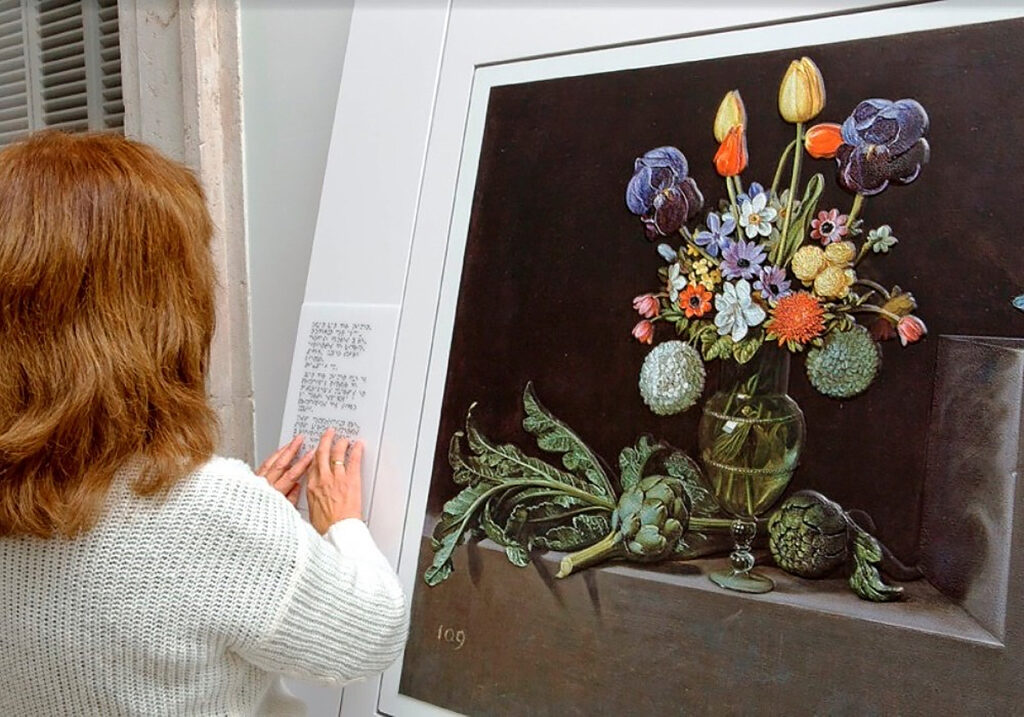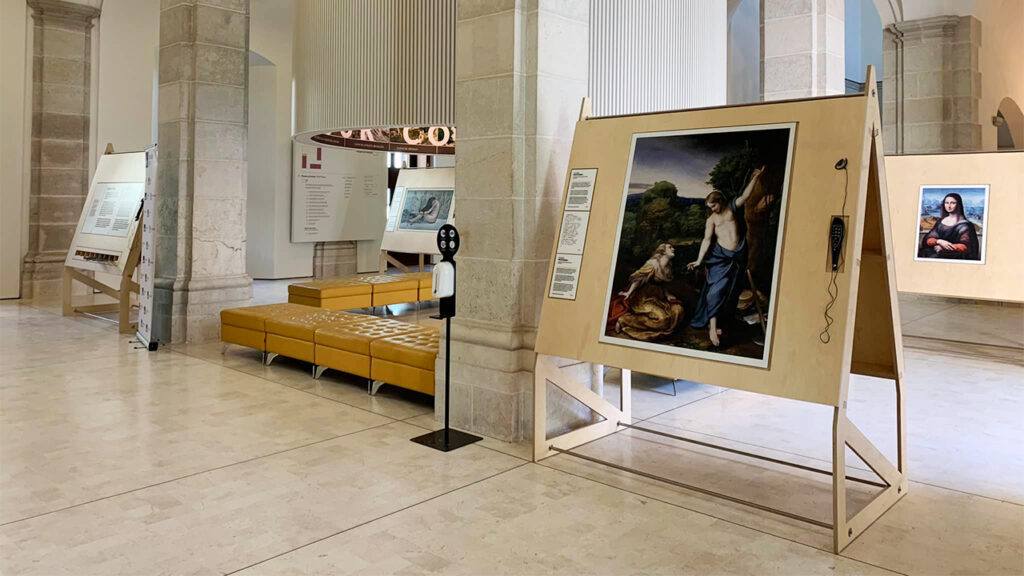In 2015, the Prado Museum launched Touching the Prado (Hoy toca el Prado), an exhibition that features 3D reproductions of famous works of art from the museum’s collection, created in partnership with professionals from the visual impairment sector. Designed with accessibility in mind, the exhibition invited visually impaired visitors to touch the pieces and feel how the details are highlighted via texture.
After running for 10 months at the Prado, Touching the Prado commenced a tour of Spanish institutions late last year. It is currently open at the Museum of Málaga and until January 2023, will make stops at the Zaragoza Museum, Lleida Museum, and the Salamanca Museum.
What happened

Along with the 3D images, the exhibition includes texts in braille, audio guides, and opaque glasses to facilitate the experience for fully sighted attendees. Image: Prado Museum
The Prado Museum used the Dürer Studies’ Didou Technique, a method of printing 3D images with six different texture levels, to recreate six paintings in the exhibition, including Leonardo da Vinci’s “Mona Lisa,” Diego de Velázquez’s “Apollo in the Forge of Vulcan,” and Titian’s “Noli me tangere.”
Touching the Prado also offers vision-impeding glasses for visitors to better understand and experience tactile art. Other tools available include braille panels and labels, and audio guides.
Why it matters

By touring the exhibition, the Prado expands on its commitment to accessibility, while encouraging other institutions to better serve visually impaired communities. Image: Museum of Málaga on Facebook
In a 2021 study with 54 visually impaired respondents, 94 percent said they visit museums but stated that a lack of features like adapted content and indoor accessibility hindered regular attendance. Additionally, only 70 percent of respondents considered themselves autonomous in museums.
While museums often have features like audio and guided tours available for visitors, visually impaired guests often lack content specifically designed with them in mind. Venues such as the Guggenheim Museum, with its Mind’s Eye audio program, and organizations like the Accessible Resources for Cultural Heritage EcoSystems, with its multimedia offerings, have sought to address these gaps.
In the same vein, Touching the Prado, by offering six paintings that visually impaired visitors can enjoy through touch, builds inclusivity into the experience of art. At the same time, fully sighted attendees can build empathy through glasses that block vision, allowing all guests to have the same experience. By touring the exhibition, the museum further expands on its accessibility push by encouraging other institutions to better serve visually impaired communities and others with different accessibility needs.



